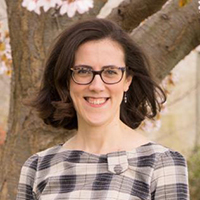
In The New York Times: E. Kristin Anderson ’05 on finding your voice in another’s words
Writer and poet E. Kristin Anderson ’05 is finding original poetry hiding in the pages of her newspapers, and she’s encouraging others to do the same.
In a recent article in The New York Times, Anderson shares an original blackout erasure poem she wrote and gives readers step-by-step instructions for creating their own.
“Creativity can be healing in difficult times, but it’s not always easy to tap into those creative juices. Sometimes you’re just too overwhelmed and exhausted to write or create. In those times, turning to found poetry—a style of poetry in which you write something new using only what you can find in an existing text — can help,” she wrote.
“In an erasure, you can only use the words that appear in the article you’ve chosen, and you have to use them in the order they appear. How you erase the words around your poem is up to you,” she added.
Anderson’s own poem was written—or erased, as the case may be—using a Jan. 10 New York Times article, “Crisp, Quiet and Still: A Wintry Swedish Wonderland” by photographer Marcus Westberg.
“While Mr. Westberg’s article is about pandemic travel in Sweden, the poem is about the elusiveness of new beginnings,” she wrote.
“It’s important that your voice speaks in your poem, and not that of the original writer—an erasure poem shouldn’t summarize the material it’s created from. It should say something new.”

